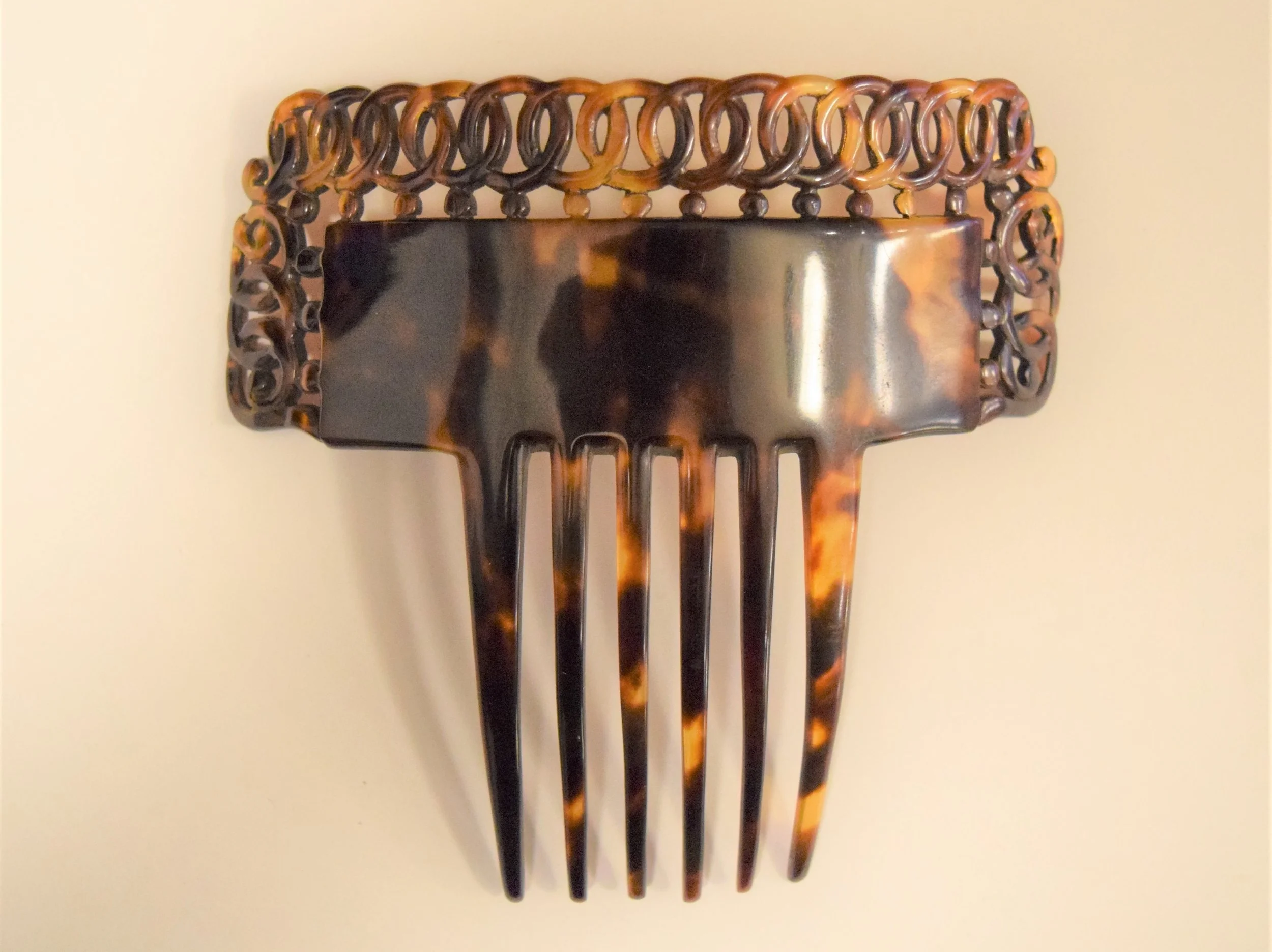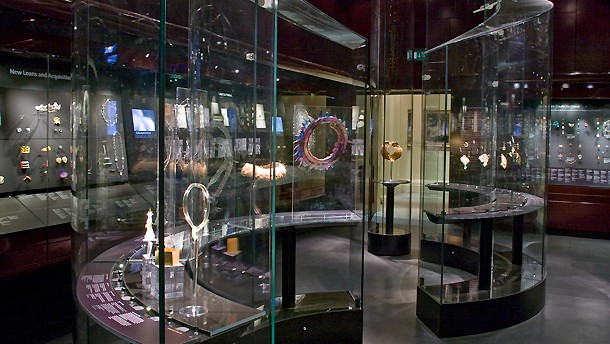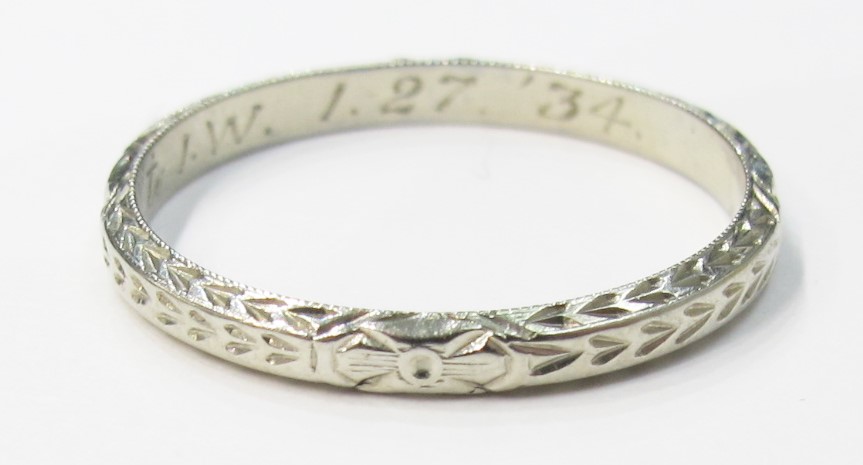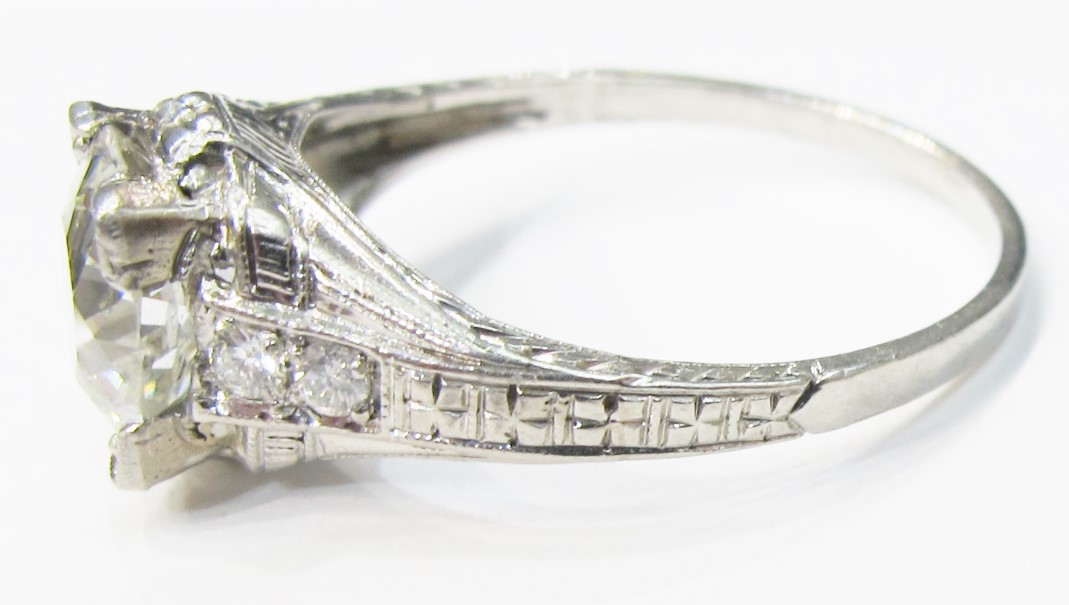It’s a uniquely wonderful time to be a lover of antique and vintage jewelry in New York City, thanks to the Metropolitan Museum. The show “Jewelry: The Body Transformed,” on view through February 24th, is a wealth of treasures (pun intended): it showcases the museum’s incredible jewelry collection; it is exceedingly beautiful to look at; and it provides a comprehensive and insightful exploration of jewelry in context. For the Gray & Davis team, it was particularly exciting to learn more about how our own collection fits into the broader history of jewelry, and to glimpse the many connections between the pieces on display at the Met and our own.
Jewelry can speak to each other across an incredibly wide distance of space and time, as shown by the similarities between this gorgeous ancient Egyptian broad collar (c. 1353–1336 BCE) and our guilloche enamel and silver collar necklace (David Anderson, 1960). The broad collar lies close to the neck and fans out to frame the face, as does our necklace; the almond shape and bright colors of the faience beads that make up this particular collar are highly evocative of the necklace’s guilloche ovals. The broad collar, the quintessential ancient Egyptian piece of jewelry, had strong associations with royalty, divinity, and protection; looking at them side by side, it’s easy to see how these qualities might have inspired our necklace too.
This fabulous snake necklace/belt (Elsa Peretti, 1973-4) has a lot in common with our gold and gemstone Victorian snake necklace (c. 1830-1850): both feature a central, stylized snake head that leads directly into a thick, tapering chain that recalls a snake’s body, giving the effect of the animal circling one’s neck. Both pieces are part of an important jewelry tradition: the snake or serpent motif has been around as long as humans have adorned themselves, and is found in cultures around the world.
“The Body Transformed” also gave us an even deeper appreciation for jewelry’s incredible diversity. This moth pendant by the great French jeweler Lucien Gaillard was created c. 1900, roughly the same period as our butterfly earrings (c. 1890), and both depict winged insects, in keeping with the contemporary passion for naturalistic motifs. Nonetheless, they couldn’t be more different. The pendant is pure Art Nouveau, made at the height of the movement and featuring its characteristic enamel and semi-precious stones. The earrings, on the other hand, are a snapshot of the transition from the established Victorian into the nascent Edwardian style, combining the former period’s love of heavy gold dangling earrings with the pave diamonds popular during the latter.
After you visit “Jewelry: The Body Transformed” (and we highly recommend you do), we invite you to stop by Gray & Davis to check out the pieces featured in this post, and to see how many other incredible connections you can find! You may even be inspired to take a piece of jewelry history home yourself.































